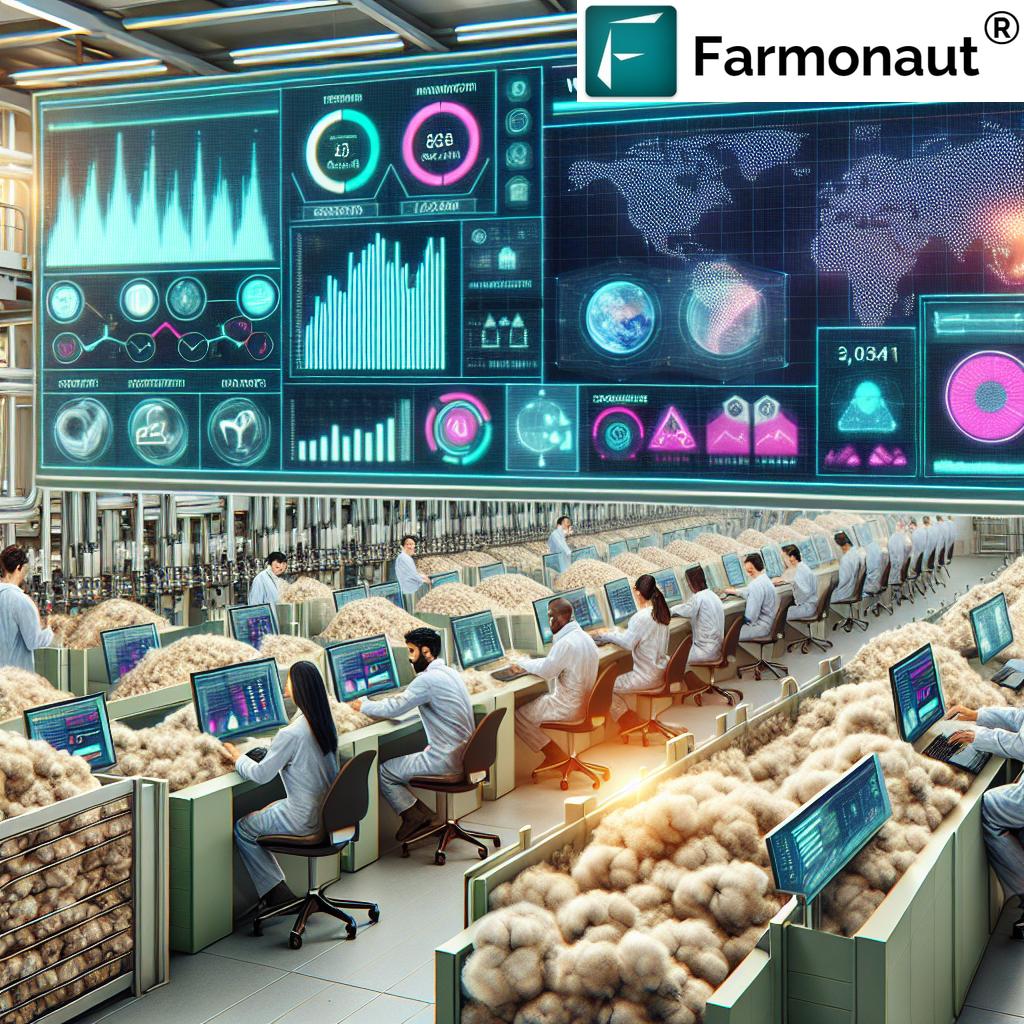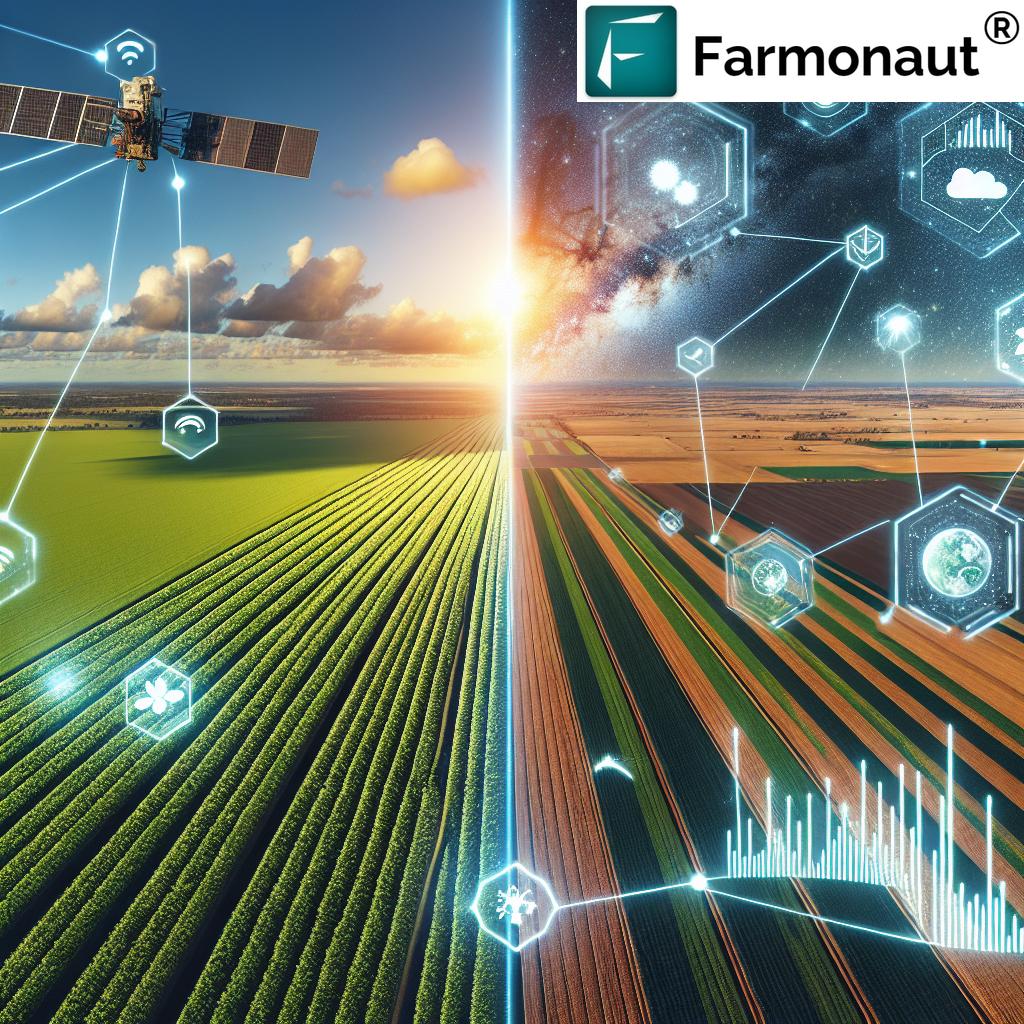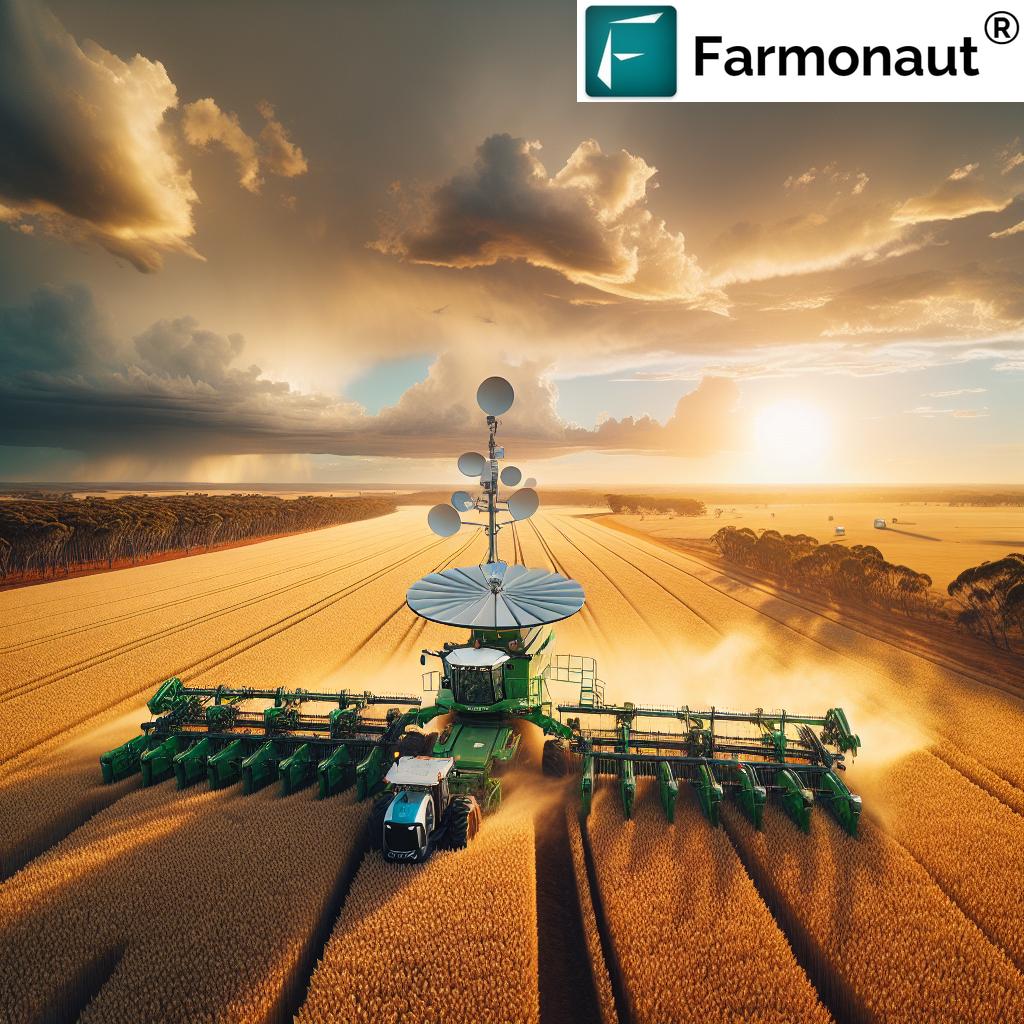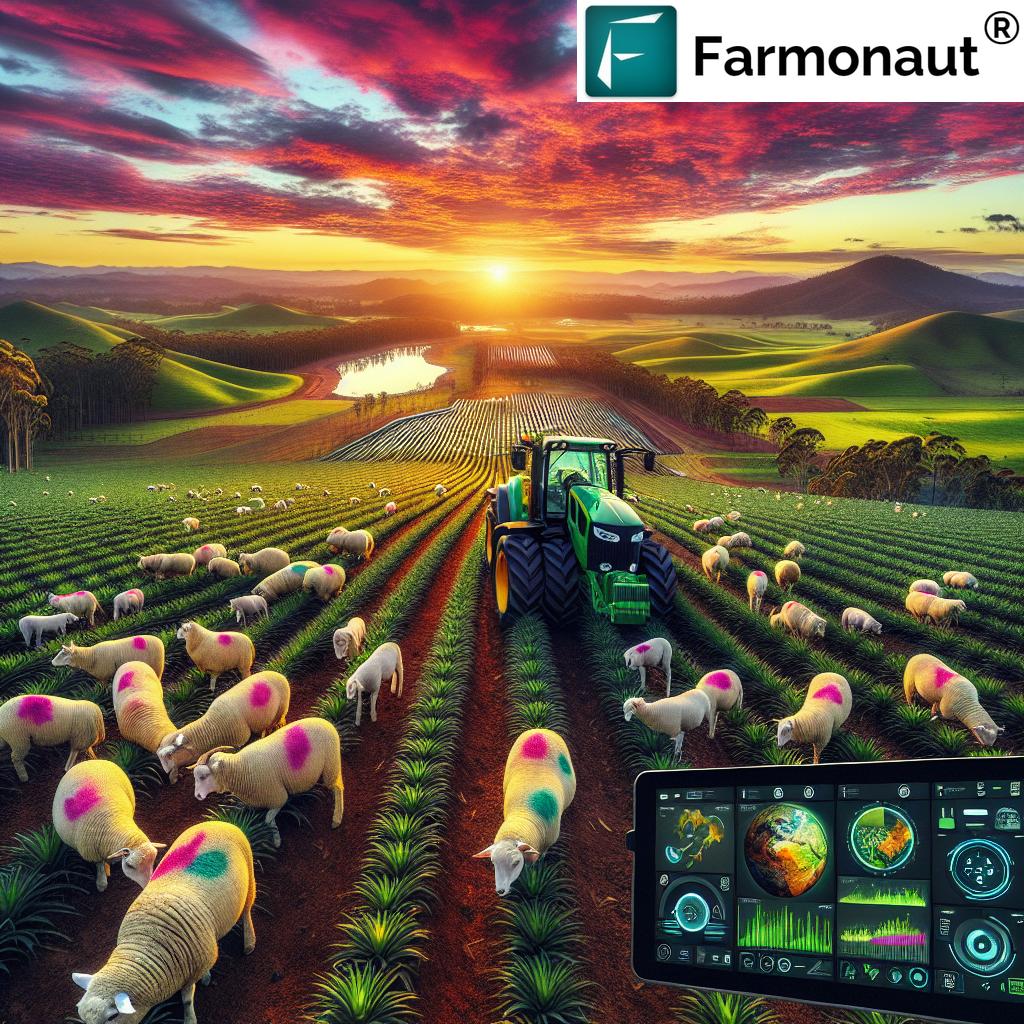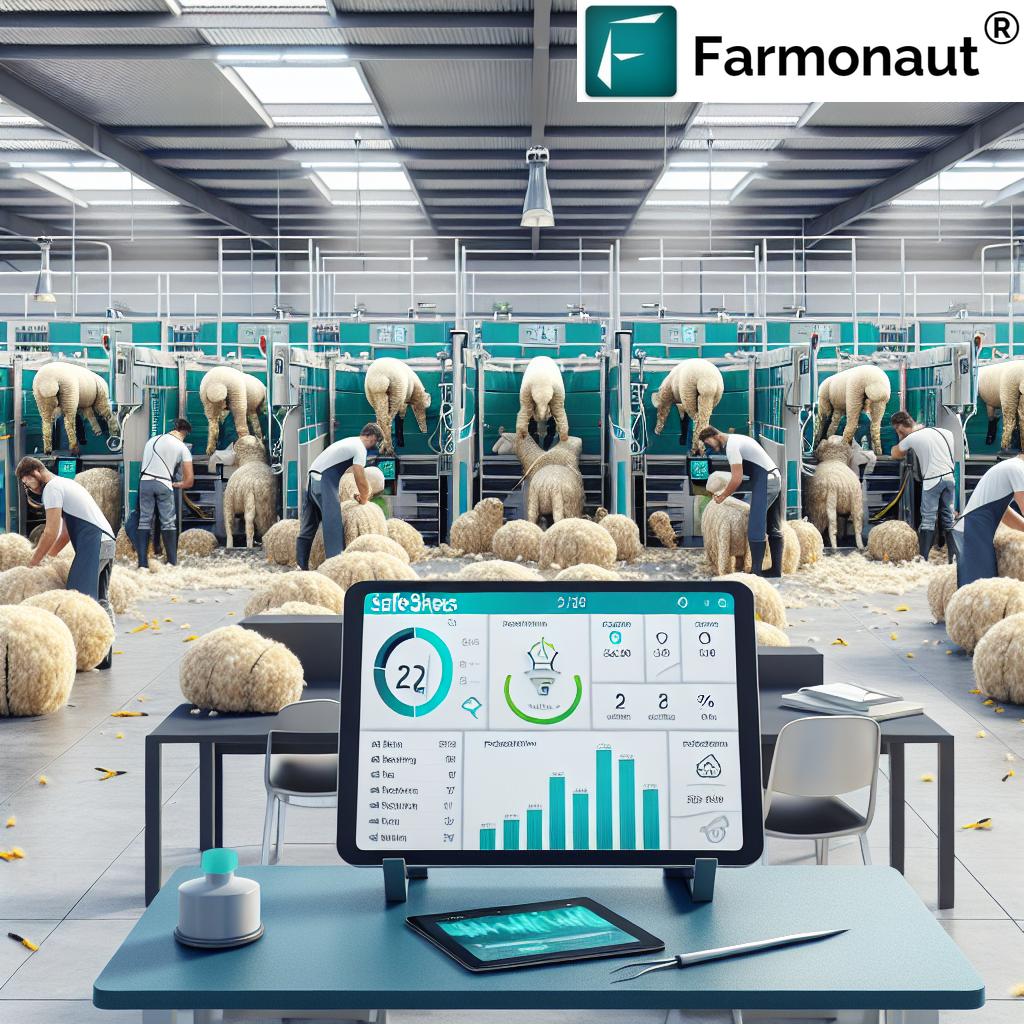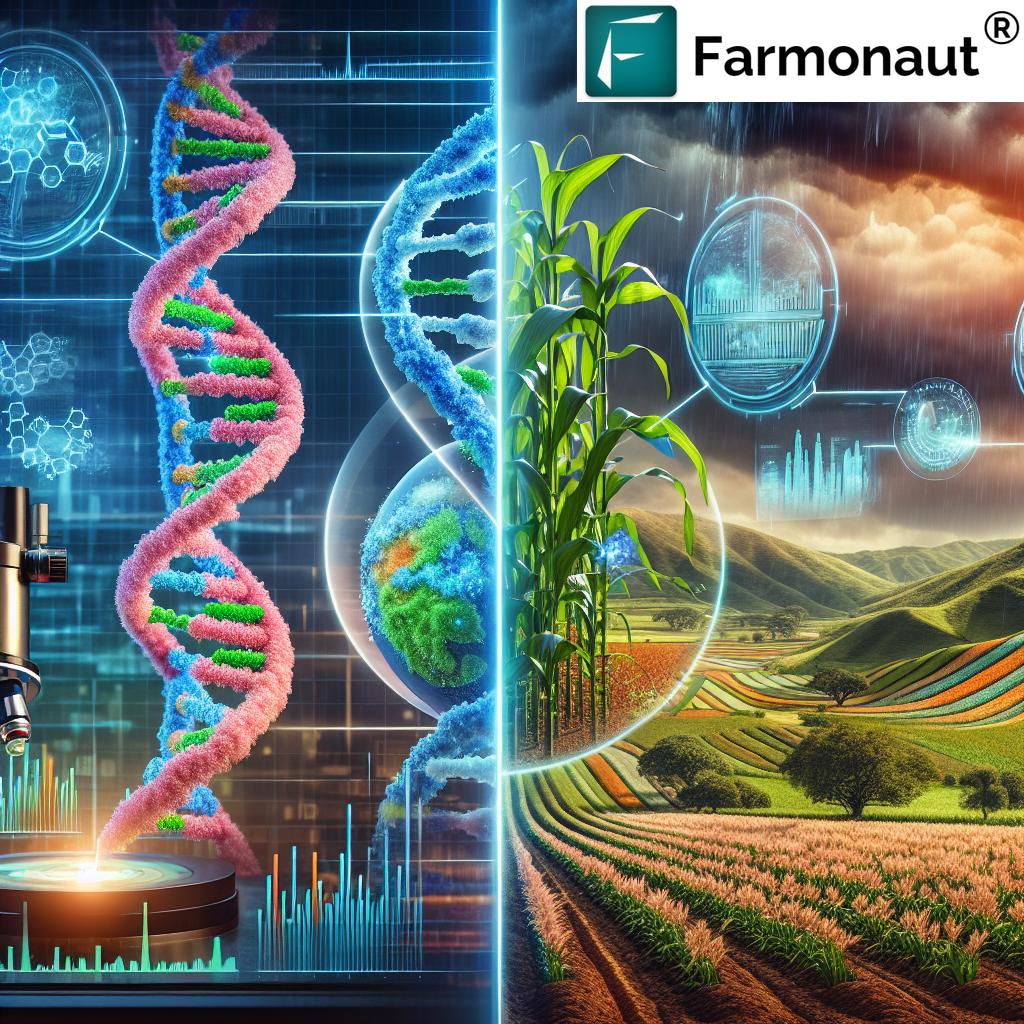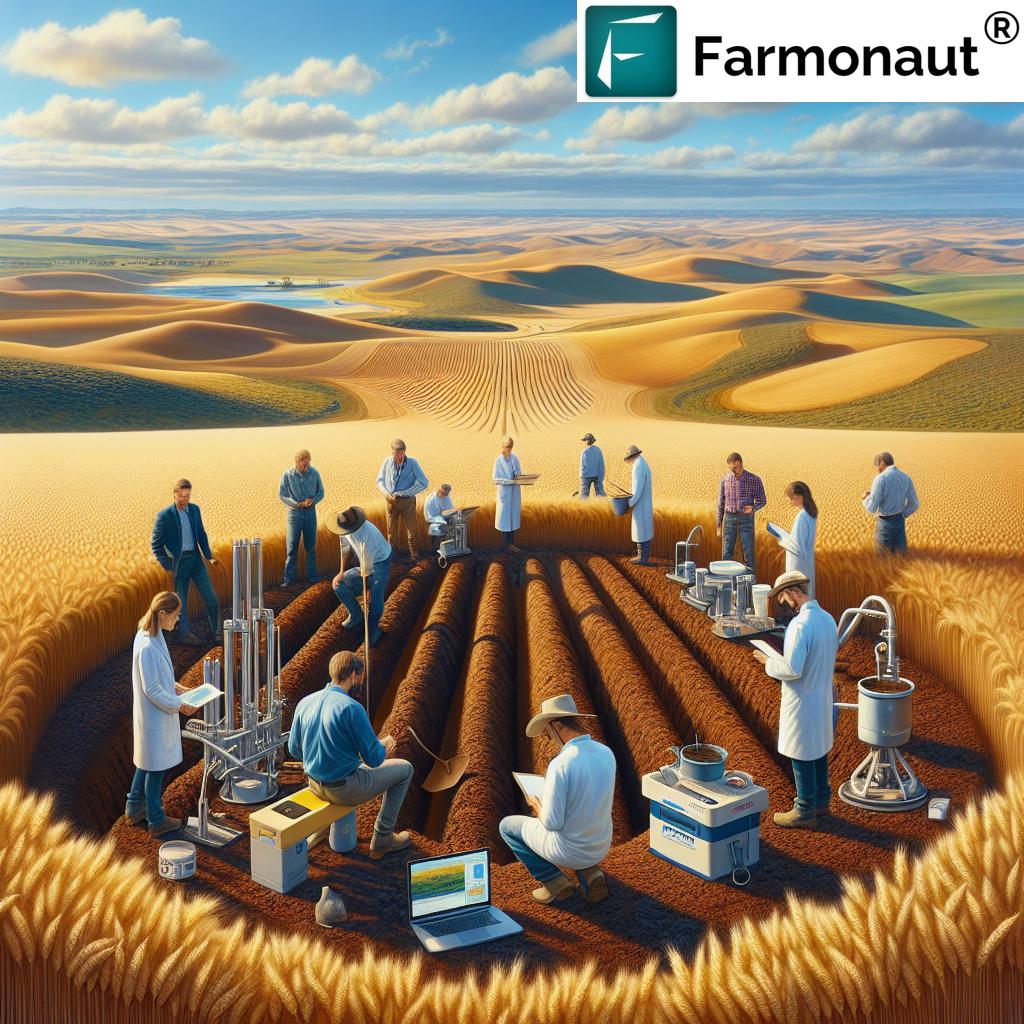Sustainable Fishing in Victorian Waters: Farmonaut’s Guide to Marine Ecosystem Conservation and Innovative Aquaculture
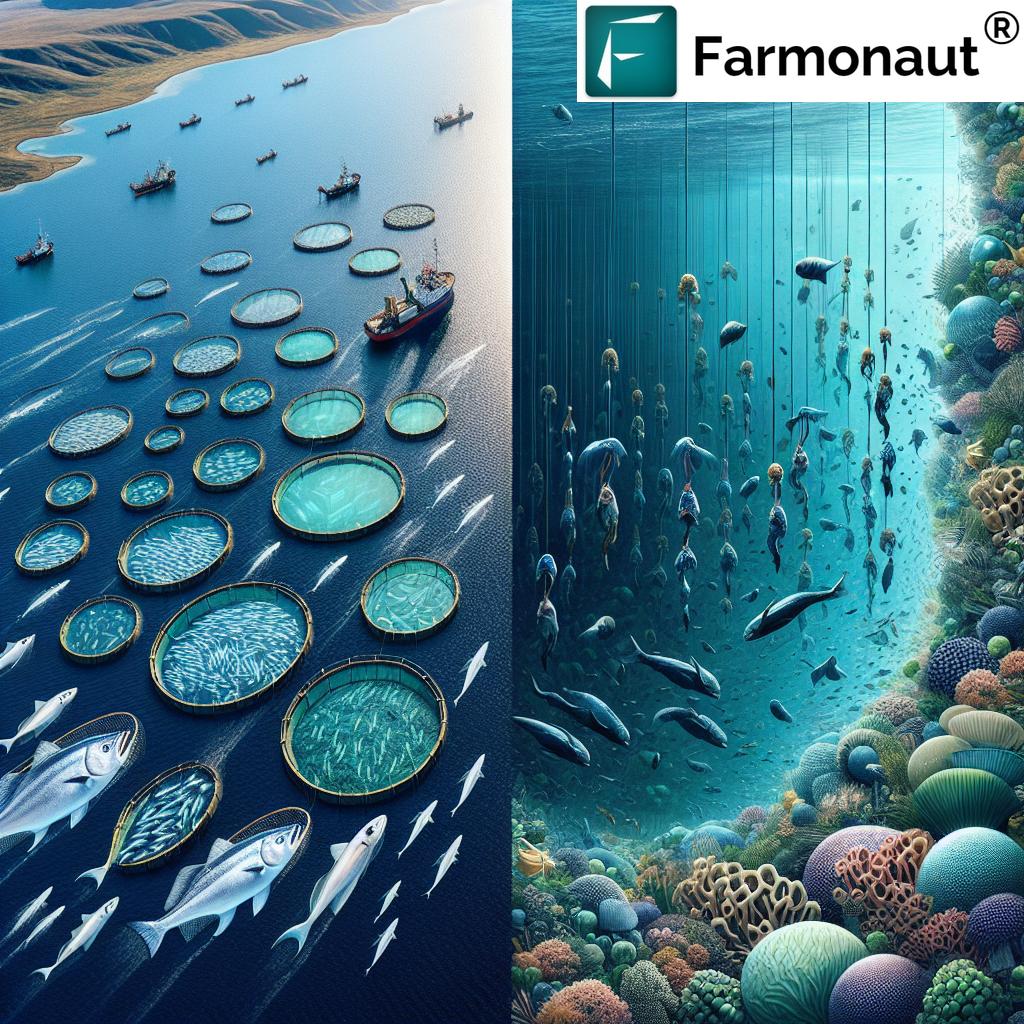
“Commercial fishing methods impact over 70% of marine ecosystems, highlighting the urgent need for sustainable practices.”
Welcome to our comprehensive guide on sustainable fishing in Victorian waters, where we explore the critical intersection of marine ecosystem conservation and innovative aquaculture. As we navigate the complex waters of modern fishing practices, we’ll uncover the challenges facing our oceans and the groundbreaking solutions that are shaping the future of the seafood industry.
In this blog post, we at Farmonaut will delve into the world of sustainable fishing practices, commercial fishing methods, and the urgent need for marine ecosystem conservation. We’ll explore how aquaculture technology and fish farming innovations are revolutionizing the seafood industry’s approach to sustainability. From the depths of the ocean to the cutting-edge of technology, we’ll examine the impact of various fishing gear technologies on our marine environments and the efforts being made to protect ocean wildlife.
The State of Our Oceans: A Call for Sustainable Fishing Practices
The health of our oceans is at a critical juncture. With commercial fishing methods impacting over 70% of marine ecosystems, the need for sustainable fishing practices has never been more pressing. In Victorian waters, as in many parts of the world, we’re witnessing the consequences of overfishing and destructive fishing techniques.
- Declining fish populations
- Damage to marine habitats
- Disruption of ocean food chains
- Threats to endangered marine species
These issues highlight the urgent need for a shift towards more sustainable approaches in our fishing industry. As we explore the various aspects of fishing and aquaculture, we’ll see how technology and innovation are playing crucial roles in addressing these challenges.
Commercial Fishing Methods: Impact and Innovation
Commercial fishing is a vital industry, providing food and livelihoods for millions worldwide. However, certain fishing methods can have significant environmental impacts. Let’s examine some common commercial fishing techniques and their effects on marine ecosystems:
Trawling: The Ocean Floor Sweep
Trawling involves dragging large nets across the sea floor or through the water column. While effective for catching large quantities of fish, it can have severe consequences:
- Destruction of seabed habitats
- High bycatch rates of non-target species
- Disturbance of marine sediments
Innovations in trawling technology, such as lighter gear and more selective nets, are being developed to reduce these impacts.
Longlines: The Extended Reach
Longline fishing uses a main line with baited hooks attached at intervals. While it can be more selective than trawling, it still poses challenges:
- Bycatch of seabirds and marine mammals
- Potential for ghost fishing if lines are lost
Advancements in longline technology include the use of circle hooks and weighted lines to reduce bycatch.
Purse Seine Nets: Encircling Schools
Purse seine fishing targets schools of fish by encircling them with a large net. While efficient for catching species like tuna, it can lead to:
- Bycatch of dolphins and other marine life
- Overfishing of juvenile fish
The development of fish aggregating devices (FADs) and improved netting materials are helping to make purse seining more sustainable.
Explore Farmonaut’s innovative solutions:
Aquaculture: The Future of Sustainable Seafood
“Aquaculture now provides over 50% of global seafood consumption, reducing pressure on wild fish populations.”
As wild fish stocks face increasing pressure, aquaculture has emerged as a crucial component of sustainable seafood production. Fish farming innovations are transforming the industry, offering solutions to many of the challenges posed by traditional fishing methods.
Benefits of Modern Aquaculture:
- Reduced pressure on wild fish populations
- Controlled environment for optimal growth
- Improved feed conversion ratios
- Potential for integration with other farming systems
Innovative Aquaculture Technologies:
- Recirculating Aquaculture Systems (RAS): These closed-loop systems minimize water usage and environmental impact.
- Offshore Aquaculture: Moving fish farms into deeper waters reduces coastal pollution and allows for larger-scale production.
- Integrated Multi-Trophic Aquaculture (IMTA): This approach combines different species that benefit from each other, creating a more balanced ecosystem.
- Aquaponics: Combining aquaculture with hydroponics, this system uses fish waste to fertilize plants, creating a symbiotic relationship.
These innovations are not only making aquaculture more sustainable but also more productive, helping to meet the growing global demand for seafood.
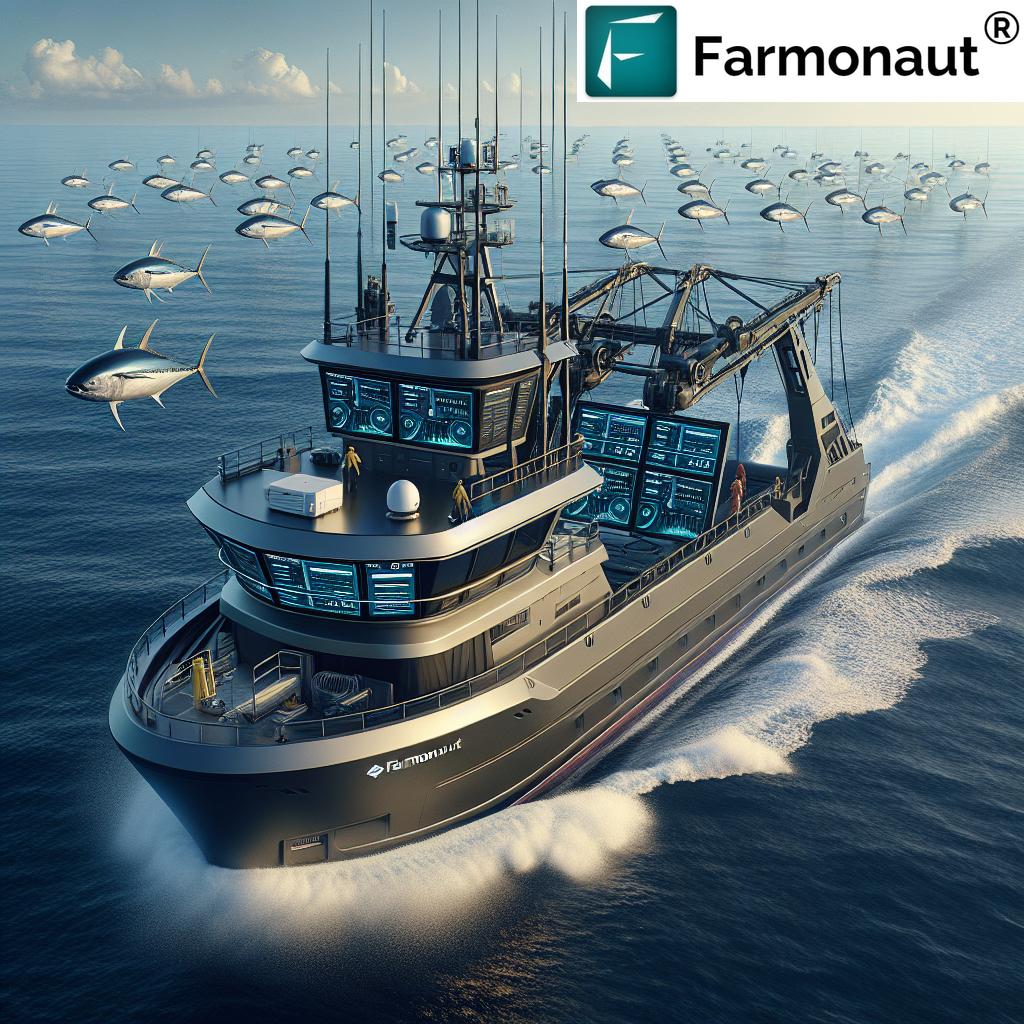
Marine Ecosystem Conservation: Protecting Our Ocean Wildlife
The health of our oceans depends on the delicate balance of marine ecosystems. Ocean wildlife protection is crucial not only for biodiversity but also for the sustainability of our fisheries. Here are some key aspects of marine conservation efforts:
- Establishing Marine Protected Areas (MPAs)
- Implementing fishing quotas and seasons
- Protecting endangered species and their habitats
- Reducing plastic pollution and other forms of marine debris
In Victorian waters, these conservation efforts are helping to preserve unique marine environments and protect species like the southern right whale, Australian sea lion, and various seabird populations.
The Role of Technology in Ocean Conservation
Advancements in technology are revolutionizing our ability to monitor and protect marine ecosystems. Some innovative tools include:
- Drones: Used for aerial surveys of marine populations and monitoring illegal fishing activities.
- Satellite Imagery: Provides large-scale monitoring of ocean health and fishing vessel movements.
- Underwater Robots: Explore and monitor deep-sea environments that are difficult for humans to access.
- AI and Machine Learning: Analyze vast amounts of data to identify patterns and trends in marine ecosystems.
Discover how Farmonaut’s technology can be applied to marine conservation:
Fishing Gear Technology: Balancing Efficiency and Sustainability
The evolution of fishing gear technology plays a crucial role in the pursuit of sustainable fishing practices. Modern innovations aim to increase selectivity, reduce bycatch, and minimize habitat damage. Let’s explore some of these advancements:
Smart Nets and Traps
- Acoustic deterrent devices to prevent marine mammal entanglement
- LED lights on nets to guide target species and deter unwanted catch
- Escape panels and sorting grids to allow non-target species to escape
Low-Impact Dredges
For bottom-dwelling species like scallops, new dredge designs minimize seabed disturbance while maintaining catch efficiency.
Precision Fishing Tools
- Sonar technology for accurate fish finding
- GPS-guided fishing to avoid protected areas and optimize fuel use
- Real-time catch monitoring systems to prevent overfishing
These technological advancements are helping to bridge the gap between commercial viability and environmental responsibility in the fishing industry.
The Victorian Perspective: Local Challenges and Solutions
Victorian waters are home to a diverse range of marine life and support a significant fishing industry. The region faces unique challenges in balancing commercial fishing with conservation efforts:
- Protection of iconic species like the southern rock lobster and abalone
- Managing the impact of recreational fishing
- Addressing the effects of climate change on local marine ecosystems
- Balancing the needs of commercial fisheries with marine park designations
Local initiatives, such as the Victorian Fisheries Authority’s sustainable fishing programs, are working to address these challenges through:
- Catch limits and size restrictions
- Seasonal closures to protect breeding populations
- Habitat restoration projects
- Education and outreach programs for recreational fishers
Learn how Farmonaut’s technology can support local fishing initiatives:
The Global Context: International Efforts for Sustainable Fishing
Sustainable fishing is a global challenge that requires international cooperation. Various organizations and agreements are working to promote sustainable practices worldwide:
- United Nations’ Sustainable Development Goal 14: Life Below Water
- Food and Agriculture Organization’s Code of Conduct for Responsible Fisheries
- Regional Fisheries Management Organizations (RFMOs)
- Marine Stewardship Council certification for sustainable seafood
These global efforts are crucial in addressing issues such as:
- Illegal, unreported, and unregulated (IUU) fishing
- Overfishing in international waters
- Cross-border marine ecosystem protection
- Sharing of sustainable fishing technologies and practices
The Role of Consumer Awareness in Sustainable Fishing
Consumer choices play a significant role in driving the demand for sustainably sourced seafood. Increasing awareness about the importance of sustainable fishing practices can lead to:
- Greater demand for certified sustainable seafood products
- Support for local, responsibly managed fisheries
- Reduced consumption of overfished species
- Pressure on retailers and restaurants to source sustainably
Educational initiatives and eco-labeling programs are helping consumers make informed choices about the seafood they purchase.
Explore how Farmonaut’s technology can enhance consumer awareness:
The Future of Sustainable Fishing: Emerging Technologies and Practices
As we look to the future, several emerging technologies and practices show promise for further improving the sustainability of fishing and aquaculture:
1. Blockchain for Traceability
Blockchain technology can provide transparent, tamper-proof records of a fish’s journey from catch to plate, ensuring sustainability claims are verifiable.
2. Gene Editing in Aquaculture
CRISPR and other gene-editing technologies could help develop fish species that are more disease-resistant and grow faster, reducing the environmental impact of fish farming.
3. Autonomous Fishing Vessels
AI-powered autonomous vessels could optimize fishing routes, reduce fuel consumption, and improve selectivity in catching target species.
4. Seaweed and Algae Farming
Expanding seaweed and algae aquaculture can provide sustainable food sources while also sequestering carbon and improving water quality.
5. Advanced Monitoring Systems
Improved satellite and sensor technologies will enhance our ability to monitor fish populations, ocean health, and fishing activities in real-time.
Comparison of Fishing Methods and Their Environmental Impact
| Fishing Method | Target Species | Bycatch Rate | Habitat Impact | Fuel Efficiency | Sustainability Score (1-10) |
|---|---|---|---|---|---|
| Trawling | Groundfish, shrimp | High (20-40%) | High | Low | 3 |
| Longlines | Tuna, swordfish | Medium (10-20%) | Low | Medium | 6 |
| Purse Seine | Sardines, anchovies | Low (5-10%) | Low | High | 7 |
| Pole and Line | Tuna | Very Low (<5%) | Very Low | Medium | 9 |
| Gillnets | Various pelagic fish | High (15-30%) | Medium | Medium | 4 |
This table provides a clear comparison of different fishing methods, highlighting their relative impacts on marine ecosystems. It’s evident that some methods, like pole and line fishing, offer significantly more sustainable options compared to more intensive methods like trawling.
Discover how Farmonaut’s technology can help in sustainable fishing practices:
The Economic Impact of Sustainable Fishing
Transitioning to more sustainable fishing practices isn’t just an environmental imperative; it also makes economic sense in the long run. Here’s how sustainable fishing can benefit the economy:
- Long-term viability of fish stocks ensures continued livelihoods for fishing communities
- Premium prices for certified sustainable seafood products
- Reduced costs through more efficient fishing practices and technologies
- New job opportunities in sustainable aquaculture and related industries
- Increased tourism revenue from healthy marine ecosystems
While there may be short-term costs associated with adopting more sustainable practices, the long-term economic benefits are substantial and crucial for the industry’s future.
Challenges in Implementing Sustainable Fishing Practices
Despite the clear benefits, implementing sustainable fishing practices faces several challenges:
- Resistance to change from traditional fishing communities
- High initial costs of adopting new technologies
- Difficulty in enforcing regulations in vast ocean areas
- Competing interests between different stakeholders
- Climate change impacting fish populations and migration patterns
Addressing these challenges requires a multi-faceted approach involving education, financial support, policy changes, and international cooperation.
The Role of Technology in Sustainable Fishing
Technology plays a crucial role in advancing sustainable fishing practices. Here are some ways in which technological innovations are making a difference:
- Satellite Monitoring: Tracks fishing vessel movements and helps prevent illegal fishing.
- AI and Machine Learning: Analyzes data to predict fish populations and optimal fishing locations.
- IoT Sensors: Monitors water quality and fish health in aquaculture settings.
- Blockchain: Ensures traceability in the seafood supply chain.
- Mobile Apps: Provides real-time information to fishers and consumers about sustainable fishing practices.
These technologies not only improve the efficiency of fishing operations but also contribute to better management and conservation of marine resources.
FAQ Section
Q1: What is sustainable fishing?
A: Sustainable fishing involves harvesting fish from the ocean in a way that maintains fish populations and preserves the health of marine ecosystems for future generations.
Q2: How does aquaculture contribute to sustainable seafood production?
A: Aquaculture, or fish farming, reduces pressure on wild fish stocks, provides a controlled environment for fish growth, and can be more efficient in terms of feed conversion and resource use.
Q3: What are some sustainable fishing methods?
A: Sustainable fishing methods include pole and line fishing, trap fishing, and carefully managed purse seining. These methods aim to minimize bycatch and habitat damage.
Q4: How can consumers support sustainable fishing?
A: Consumers can support sustainable fishing by choosing seafood products certified by organizations like the Marine Stewardship Council, asking questions about the source of seafood, and diversifying their seafood choices to include more sustainable options.
Q5: What role does technology play in sustainable fishing?
A: Technology plays a crucial role in sustainable fishing through satellite monitoring, AI-powered data analysis, IoT sensors for aquaculture, blockchain for traceability, and mobile apps for information sharing.
Conclusion: A Sustainable Future for Our Oceans
As we’ve explored throughout this blog post, sustainable fishing practices and marine ecosystem conservation are not just environmental imperatives but economic necessities. The future of our oceans and the fishing industry depends on our ability to balance human needs with the health of marine ecosystems.
From innovative aquaculture technologies to advanced monitoring systems, the tools for creating a more sustainable fishing industry are within our grasp. However, success will require the combined efforts of fishers, policymakers, scientists, and consumers.
By embracing sustainable practices, supporting marine conservation efforts, and leveraging cutting-edge technologies, we can ensure that our oceans continue to provide for generations to come. The journey towards truly sustainable fishing is complex, but it’s one that we must undertake for the sake of our planet and our future.
As we move forward, let’s remember that every choice we make – from the seafood we consume to the policies we support – plays a role in shaping the future of our oceans. Together, we can create a world where sustainable fishing is not just an aspiration but a reality.









